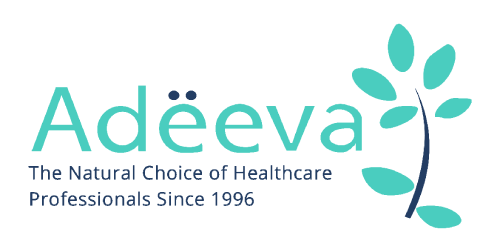
LMU 84 – Guarding Your Vital Organs: Navigating Acetaminophen with Wisdom
Source: Journal Drug Development Research (2015)
Lifestyle Medicine Update (March 24, 2018)
Introduction
In the labyrinth of pain relief and fever reduction, acetaminophen stands as a familiar warrior, offering solace through its widespread presence in over-the-counter medications. A household name, epitomized by Tylenol, this pharmaceutical soldier has witnessed an astonishing 27 billion doses dispensed in 2009 alone. With its unparalleled efficacy, however, comes an ominous downside—acetaminophen’s potential to ravage the liver and, to some extent, the kidneys. Positioned as the leading culprit behind drug-induced liver failure in our world, acetaminophen warrants attention and understanding. It’s time to delve into this intricate narrative, exploring the mechanisms that render this painkiller a double-edged sword, capable of both healing and harm.
The Stealthy Culprit: Acetaminophen’s Wrath on the Liver
Acetaminophen has garnered notoriety for inducing liver failure, a consequence that stems from its transformation within the liver. Metabolized into a fierce and reactive agent known as the NAPQI metabolite, acetaminophen emerges as a formidable adversary to liver cells. This metabolite inflicts damage and even death upon these cells, culminating in the tragic cascade of liver failure. The twist in this tale lies in the role of glutathione, a vital protector that can counteract and neutralize the NAPQI metabolite, rendering it harmless and paving the way for its elimination from the body.
The Depleting Defender: Acetaminophen’s Impact on Glutathione
However, a cruel irony unfolds with the chronic use of acetaminophen. This seemingly benevolent ally stealthily depletes glutathione levels not just in the liver, but throughout the body, orchestrating a gradual deterioration of liver cells. The consequence is twofold: liver cell damage and eventual cell death. The intricate dance between acetaminophen, its metabolite, and the body’s defence mechanism is a critical juncture to understand in the quest to protect our precious organs.
A Lifesaving Ally: NAC Steps onto the Stage
Amidst the tumultuous backdrop of acetaminophen’s impact, an unsung hero emerges in the form of N-Acetylcysteine (NAC). This natural substance holds the key to mitigating the impending damage caused by acetaminophen overdose. In cases of acute overdose, hospitals administer NAC as a potent antidote. NAC serves as a building block for the synthesis of glutathione, rapidly restoring its levels and halting liver failure in its tracks. This medical marvel has paved the way for a potential safeguard against liver damage induced by regular acetaminophen usage.
NAC: Beyond Acute Overdose
Recent studies have unveiled a promising prospect—the oral ingestion of NAC, available as a supplement, as a defence against chronic acetaminophen usage. A notable study published in the journal Drug Development Research in 2015 shed light on this matter. This research postulates that acetaminophen-containing drugs should ideally be paired with an equal dose of NAC to avert liver damage with each dose of acetaminophen ingested. Although this recommendation has yet to be heeded by lawmakers and pharmaceutical companies, its potential to shape the future of pain relief strategies is undeniable.
Elevating Glutathione: A Symphony of Natural Allies
While NAC takes center stage, other natural allies can also join the fight to preserve and elevate glutathione levels:
- Alpha-lipoic acid (ALA): A powerful antioxidant that complements NAC in raising and maintaining glutathione levels.
- Silymarin (Milk Thistle): Not only supporting liver repair but also safeguarding kidney cells from the clutches of diverse free radicals induced by various drugs and toxins.
- L-Glutamine: A pivotal amino acid vital for glutathione synthesis.
- Combination Supplements: Some companies have harnessed the synergy of NAC, ALA, Silymarin, and L-Glutamine into a single supplement.
Nutrition: A Fundamental Defender
Beyond supplements, the realm of nutrition also wields the power to fortify liver function and bolster detoxification. Incorporating certain foods can support your body’s innate ability to thrive:
- Garlic: A natural ally in the pursuit of liver health.
- Onions: Partnering with garlic in promoting overall well-being.
- Cruciferous Vegetables: A host of superheroes, such as broccoli, Brussels sprouts, cabbage, cauliflower, and Bok choy, offer indole 3 carbinol and sulforaphane, compounds that amplify detoxification.
A Lesson in Moderation: Beware the Alcohol Trap
While navigating the realm of acetaminophen, another crucial factor beckons for attention—alcohol. Combining alcohol with acetaminophen amplifies the liver and kidney damage potential of this drug. A cardinal rule emerges: abstain from alcohol while under the influence of acetaminophen to shield your vital organs from this potent combination.
Conclusion: Empower Yourself with Knowledge
In the tapestry of our lives, acetaminophen’s role emerges as both a healer and a harvester of damage. Armed with the understanding of its potential pitfalls and protective allies, you can take charge of your well-being. While lawmakers and pharmaceutical giants ponder the integration of NAC with acetaminophen, you can proactively safeguard your liver and kidneys. By embracing NAC supplements, harnessing the power of natural agents, and incorporating liver-friendly foods, you embark on a journey of empowerment. In the pursuit of wellness, knowledge is your greatest armor.
References
- Owumi S, Andrus JP, et al. Co-administration of N-Acetylcysteine and Acetaminophen Efficiently Blocks Acetaminophen Toxicity. Drug Dev Res 76 : 251-258, 2015. © 2015 Wiley Periodicals, Inc. [Link to study](https://onlinelibrary.wiley.com/doi/full/10.1002/ddr.21262#references-section)
- Deaths from Acetaminophen: [ProPublica Article](https://www.propublica.org/article/tylenol-mcneil-fda-behind-the-numbers)
- Sears S.E. Chelation: Harnessing and Enhancing Heavy Metal Detoxification – A Review. Scientific World Journal. 2013. [Link to study](https://www.hindawi.com/journals/tswj/2013/219840) : Children’s Hospital of Eastern Ontario Research Institute
Eat Smart, Live Well, Look Great
Dr. Meschino

Dr. James Meschino
ABOUT THE AUTHOR
Dr. James Meschino, DC, MS, ROHP, is an educator, author, and researcher having lectured to thousands of healthcare professionals across North America. He holds a Master’s Degree in Science with specialties in human nutrition and biology and is recognized as an expert in the field of nutrition, anti-aging, fitness, and wellness as well as the author of numerous books.


